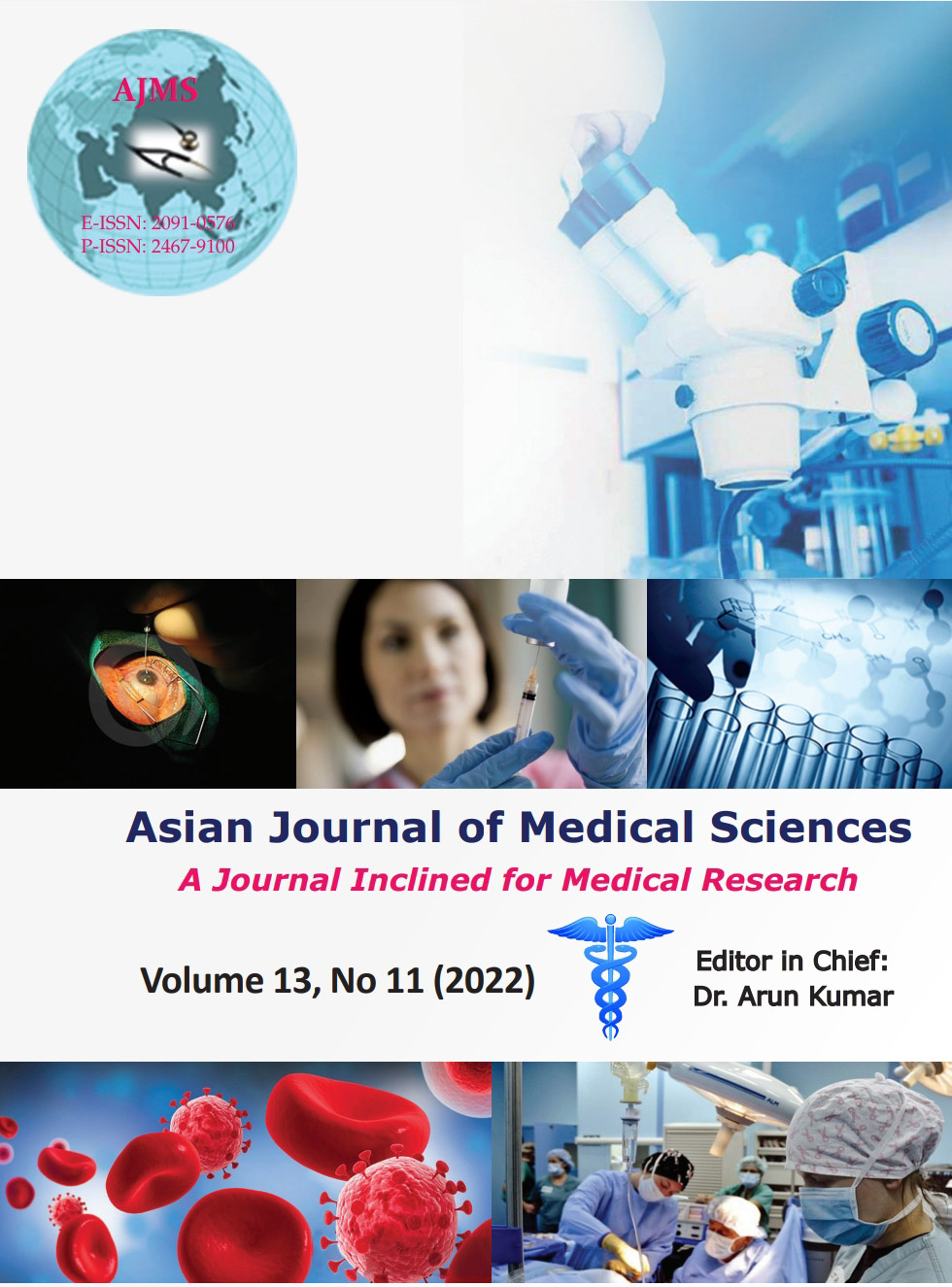Incidence of atrial fibrillation in patients with cryptogenic stroke
Keywords:
Atrial fibrillation; Cryptogenic stroke; HypertensionAbstract
Background: Stroke can cause serious disability and mortality among the worldwide population. Atrial fibrillation (AF) is one of the major risk factors for ischemic stroke and a common cause of cardioembolism in old age.
Aims and Objectives: The aim of the study was to study the incidence of AF in patients with cryptogenic stroke (CS).
Materials and Methods: A prospective and observational study on AF and stroke was carried out in the Department of Cardiology/Neurology, in a tertiary care hospital. Data were collected in the form of chief complaints, medical history, clinical examination, and treatment given in the enclosed proforma for 1 year. On follow-up, specified goals including hypertension (HTN) management, lipid management, and diabetes management were done as per current guidelines.
Results: Out of 100 CS patients, 69 were male and the mean age of the patients in this study was 59±13.37 years. The incidence of AF was 11% at the end of 1 year with male predominance (64%) and a mean age of 62±12.94 years. The mean CHADS2 Score in this study group was 1.40 with a standard deviation of 1.31. Stroke reoccurred in 12% of patients at the end of 1-year follow-up. Patients with recurrent stroke were mostly elderly with a mean age of 70 years (SD=9.78, P=0.03).
Conclusion: It is found that a longer duration of electrocardiographic monitoring after CS increases the proportion diagnosed with AF and should be done in selected high-risk cases, especially in patients with HTN, dyslipidemia, diabetes mellitus, chronic kidney disease, and high CHADS2 score.
Downloads
Downloads
Published
How to Cite
Issue
Section
License
Copyright (c) 2022 Asian Journal of Medical Sciences

This work is licensed under a Creative Commons Attribution-NonCommercial 4.0 International License.
Authors who publish with this journal agree to the following terms:
- The journal holds copyright and publishes the work under a Creative Commons CC-BY-NC license that permits use, distribution and reprduction in any medium, provided the original work is properly cited and is not used for commercial purposes. The journal should be recognised as the original publisher of this work.
- Authors are able to enter into separate, additional contractual arrangements for the non-exclusive distribution of the journal's published version of the work (e.g., post it to an institutional repository or publish it in a book), with an acknowledgement of its initial publication in this journal.
- Authors are permitted and encouraged to post their work online (e.g., in institutional repositories or on their website) prior to and during the submission process, as it can lead to productive exchanges, as well as earlier and greater citation of published work (See The Effect of Open Access).




